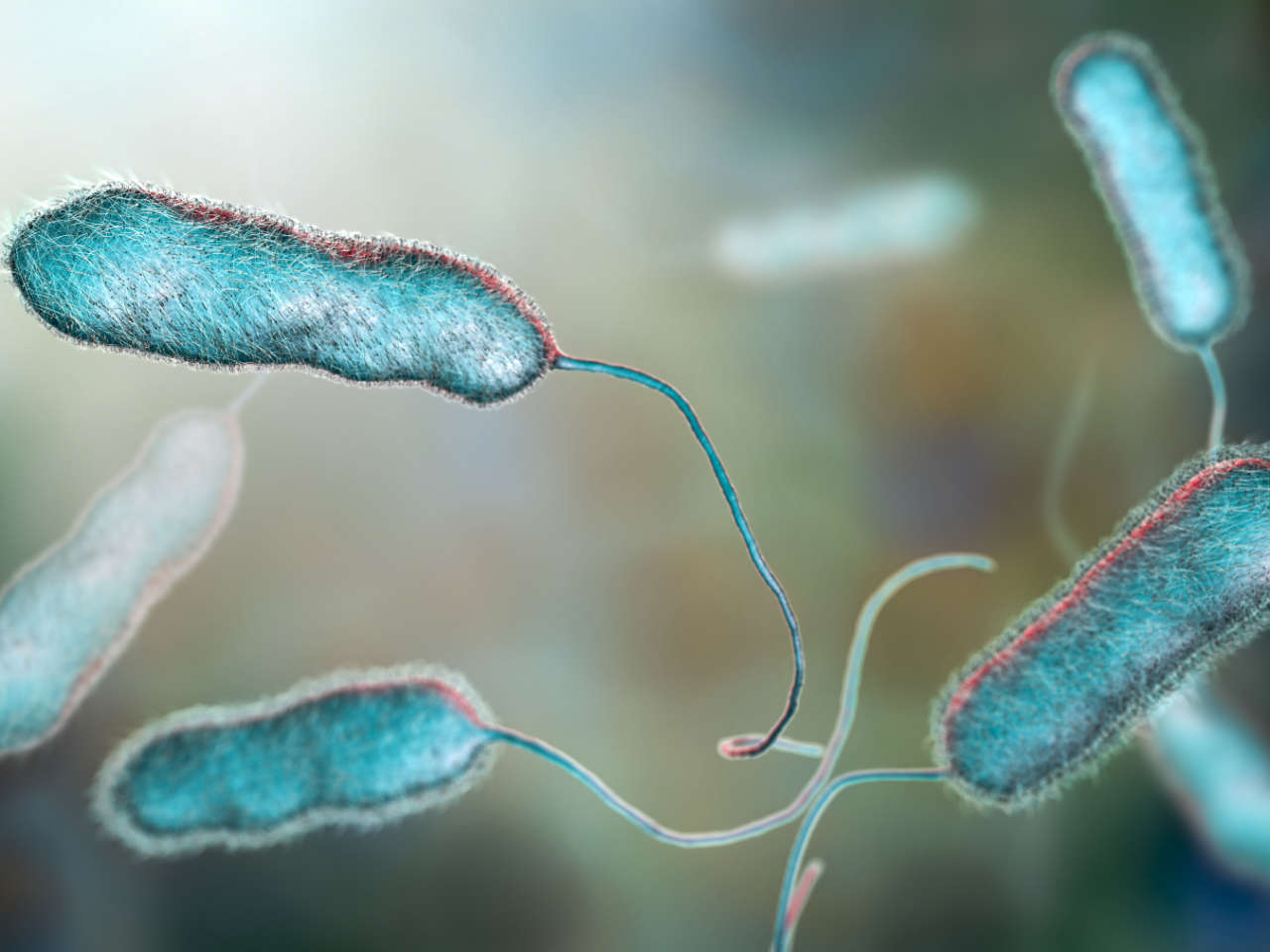
- Understand what Legionella is and how it causes illnesses such as Legionnaires’ disease.
- Learn how Legionella bacteria spread, how people’s lungs are infected and how to prevent Legionnaires’ disease.
- Discover how to manage Legionella in premises, and the need for Legionella awareness training.
Legionella bacteria are responsible for a range of respiratory diseases – known collectively as Legionellosis – with Legionnaires’ disease the most widely recognised. There are around 500 reported cases of Legionnaires’ disease in the UK each year. The Legionella bacteria that cause Legionnaires’ disease are largely preventable with the right training, risk assessments and preventative measures.
Make sure your organisation complies with the Control of Substances Hazardous to Health Regulations 2002 (COSHH) with our Legionella Awareness Training. Learn what Legionella is, how to identify the risks and control measures to help effectively manage Legionella risks in premises.
What is Legionella?
Legionella is a type of bacteria that causes Legionellosis – the collective name for several respiratory illnesses that range from Lochgoilhead fever and Pontiac fever to the more serious Legionnaires’ disease.
Legionella bacteria are found in natural water environments, such as lakes and streams, though concentrations here are typically low and so don’t pose a health risk. However, when the bacteria exist in higher concentrations, particularly in purpose-built water systems found in commercial premises, the risk of infection can be greater.
Legionella bacteria can be found in:
- Premises with purpose-built water systems, such as offices, leisure centres, factories, hospitals, care homes and hotels.
- Certain types of air conditioning systems.
- Water tanks and cooling towers.
- Spa pools and hot tubs.
- Showers, taps and washrooms.
- Water features, such as fountains or sprays.
Standing, still or stagnant water is a breeding ground for Legionella bacteria where there is the addition of nutrients. It is less likely to be found in domestic properties or anywhere where the turnover of water is frequent, and there are no areas of the water system where water can remain still and bacteria proliferate, such as redundant or capped off pipework.
What is Legionnaires’ disease?
Legionnaires’ disease is a severe form of pneumonia caused by Legionella bacteria. While Public Health England reports around 500 Legionnaires’ disease cases each year, there could be as many as 4,000 to 5,000 cases of undiagnosed Legionnaires’ disease each year in the UK.
Left untreated, Legionnaires’ disease can be fatal. Without effective treatment of antibiotics, it can result in long-term health problems.
How do you catch Legionnaires’ disease?
Legionnaires’ disease is caused by inhaling droplets of water containing Legionella bacteria, such as from droplets expelled from a water-cooled air conditioning system or workplace washroom.
Any purpose-built water system can be a breeding ground for Legionella bacteria, and outbreaks can occur if bacteria form in sufficient quantities. The environmental conditions need to be right, with bacteria thriving in water temperatures between 20°C to 45°C along with a ready supply of nutrients such as biofilms, scale, sludge, rust or organic matter that may have entered the water system.
Water droplets from infected water, such as fine aerosols expelled from water outlets or cooling towers, can contain bacteria that are subsequently inhaled, resulting in Legionnaires’ disease.
Legionnaires’ disease isn’t contagious. You can’t catch Legionnaires’ disease from other infected people.
Everyone is at risk from inhaling Legionella bacteria, but some people are at greater risk of a more serious infection, including:
- Anyone with an impaired or compromised immune system.
- People who smoke.
- People who drink alcohol heavily.
- People with certain medical conditions such as diabetes, cancer, kidney failure or lung disease.
- Anyone aged over 45 years.
Legionnaires’ disease symptoms
Legionnaires’ disease has symptoms that can be mistaken for flu or Covid-19 – which is why there may be under-reporting. Legionnaires’ disease symptoms include:
- Cough
- Shortness of breath
- Headache
- High temperature or fever
- Muscle aches
- Chills
- Chest pain
Severe cases of Legionnaires’ disease can cause sickness, diarrhoea and confusion.
Workers should seek advice from their general practitioner if they develop symptoms, especially if they may have been exposed to a water aerosol.
Symptoms usually appear two to ten days after being exposed to the bacteria – though in some cases symptoms take up to two weeks to appear. If left untreated, Legionnaires’ disease can cause breathing problems and prevent the lungs from working effectively, resulting in less oxygen passing into the bloodstream.
If caught and treated early, most people make a full recovery and feel back to normal after a few weeks.
Managing Legionella in the workplace
Employers and people in control of premises, such as landlords, have a legal duty to take suitable precautions to prevent and control the risk of exposure to Legionella. This includes understanding what Legionella is, identifying and controlling risks associated with Legionella along with the proper maintenance of all water systems in their premises.
As a person responsible for premises, you’ll need to conduct a risk assessment to identify and assess the sources of risk, and put in place a plan to control those risks, such as maintenance programmes and staff awareness training.
A responsible person should:
- Conduct a risk assessment to identify and evaluate the sources of risk of Legionella.
- Create a plan based on the risk assessment to control the risk, such as staff training.
- Ensure the plan is carried out and its effectiveness regularly reviewed.
Ensure accurate records are kept and maintained.
A competent person can carry out a Legionella risk assessment in your organisation. You can also bring in expert support, such as an external consultant specialising in Legionella risk assessments and management.
Legionella and Covid-19
The advent of Covid-19 has led to many premises being vacant or infrequently used for extended periods. This can lead to increased risks of Legionella bacteria forming in water systems, including office washrooms and air conditioning systems. Water in these systems can stagnate, creating an ideal breeding environment for Legionella bacteria.
Any person who is responsible for premises must conduct a Legionella risk assessment, especially when re-opening up previously dormant premises and reinstating a water system or restarting air conditioning units.
Measures designed to prevent Legionella growth must be maintained in premises, even if they have lower occupancy or are empty.
Legionella awareness training
Ensure Duty Holders and Responsible Persons, managers and employees are aware and learn how to protect themselves and others from the risks posed by Legionella bacteria. Our IOSH Approved online Legionella Awareness Training helps employers and duty holders to understand the hazards, risks and compliance associated with Legionella bacteria in water systems, plant and facilities.
By the end of the course you will:
- Understand what Legionella is and the potential health risks it poses for workers, customers and others.
- Recognise the main ways Legionella can become airborne.
- Recognise the common control measures used to reduce the risk of Legionella, including risk assessments.
- Appreciate the legal responsibilities of duty holders, responsible persons and your role in Legionella management and compliance.
- Understand the importance of compliance with the relevant legislation and guidance.

Adam Clarke
Managing Director (Consulting)
